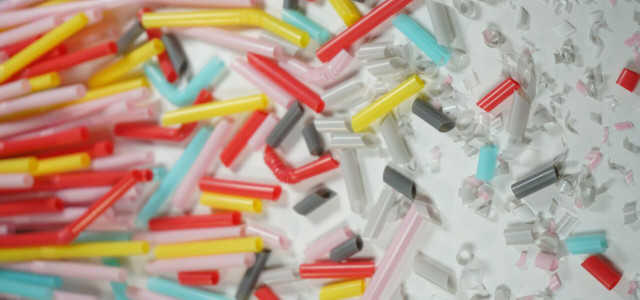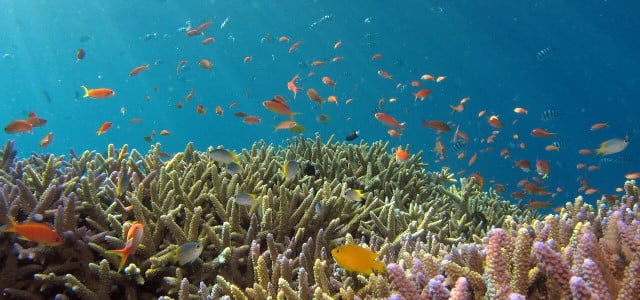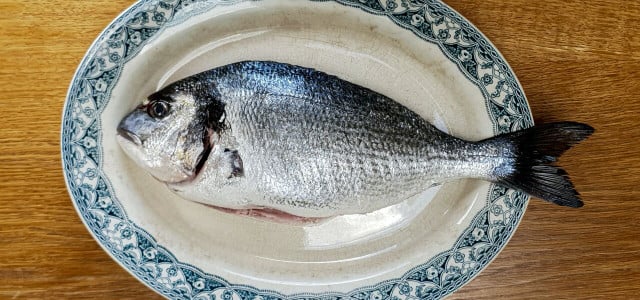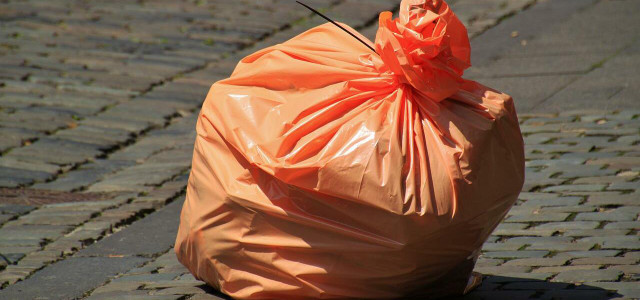Nanoplastics are a part of our everyday lives. Find out what the main sources are, what effects they have on the environment as well as human health, and what you can do to help.
While you may have heard of microplastics, you might wonder: what are nanoplastics? As the name suggests, nanoplastics are especially small microplastics and are defined as synthetic polymers ranging from 1 nanometer to 1 micrometer (0,001 millimeters). Microplastics are currently defined as plastic pieces smaller than 5 millimeters, which is why nanoplastics are, strictly speaking, a subcategory of microplastics.
Originally reported in 2004, their effects on humans, animals and the environment have garnered increased attention in recent years. In this article, we’ll dive into how nanoplastics typically enter waterways, what implications they have for humans, animals as well as the environment and industrial as well as personal efforts to mitigate the pollution with nanoplastics.
Sources and Typical Routes of Nanoplastics
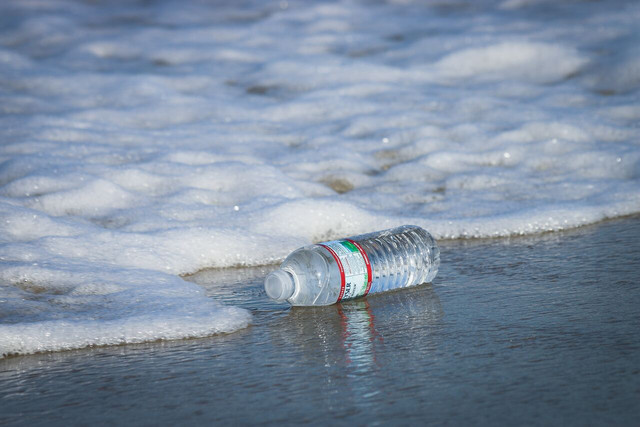
Recently, the amount of microplastics in the ocean has drastically increased: 8 million tons of plastic waste enter our oceans every year. By 2050, researchers expect the number of microplastics and nanoplastics in the Pacific Ocean to increase more than sixfold compared to 2008.
Nanoplastics are essentially the breakdown of larger plastic debris turned into microplastics, continuously separated through corrosion, ultraviolet light and waves in the ocean. The plastic is shed into millions of smaller pieces that eventually become invisible — but not less damaging.
Many of the world’s megacities are located near coastlines, making it likely that most plastic waste comes from these cities. However, with current methodologies, researchers still struggle to effectively identify and characterize nanoplastics. Currently, scientists are working to classify nanoplastics alongside microplastics according to shape, size and type of plastic.
Given that nanoplastics are the smaller remnants of microplastics, it makes sense to first take a look at how microplastics enter our waterways. The main sources of primary microplastics, which are released directly into the environment as small particles, are:
- The laundering of synthetic clothes made of polyester, nylon or elastane (35 percent of primary microplastics)
- Abrasion of tires through driving (28 percent)
- Intentionally added microplastics in personal care products, for example, microbeads in facial scrubs (2 percent)
By the way: for this reason, microbeads are actually on our list of 8 Things to Eliminate from Your Home.
However, next to primary microplastics, there are also secondary microplastics, which
- Originate from larger degrading plastic objects such as bottles, bags or fishing nets and
- Account for 69–81 percent of microplastics found in the ocean.
Microplastics mostly enter the ocean through so-called land flow (plastics are washed by wind and rain and are flushed into rivers and other water streams). Other major contributors include coastal tourism, fishing and ship transportation.
Environmental Impacts of Nanoplastics
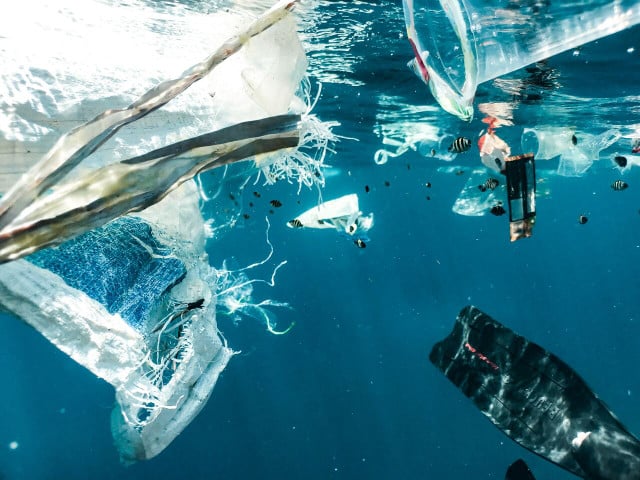


Synthetic polymers significantly contribute to ocean pollution by accumulating larger plastic debris that further sheds into millions of invisible particles of microplastics and nanoplastics. However, one of the major challenges that policymakers and scientists face is a general lack of knowledge when it comes to the biological impact of micro- and nanoplastics. Another problem is that nanoplastics are so small that it becomes increasingly difficult to even detect them — that goes for researchers but surely also for animals.
Due to the invisibility of microplastics and nanoplastics, animals may accidentally consume them. The myriad effects this has on fish include reducing food intake, delaying growth, causing oxidative damage and provoking abnormal behavior. Fish that consumed nanoplastics were found to have significant differences in body weight and showed other malfunctions in their metabolism. This is mainly because nanoplastics accumulate in animals’ digestive tracts and will convey a feeling of satiety when, in reality, fish have not consumed enough nutrients.
Recent research also showed that nanoplastics significantly affect reproductive health in marine life: ovulation in females is notably reduced, and nanoplastics generally inhibit reproductive capacity. The synthetics will trigger a series of immune responses, among them oxidative damage to animals’ white blood cells. Consequences range from growth decrease and inflammation to genetic damage and increased mortality.
Another aspect that makes nanoplastics even more dangerous is their high surface-area-to-volume ratio, making it easy for other contaminants, such as toxic organic substances, to adhere to their surface. These residues also include crude oil, iron oxides, organic pollutants, bacteria and even viruses. This can give rise to new types of pollution, like ‘plastitar‘ or so-called plastiglomerates.
This process can increase those organic pollutants’ toxicity levels — for ‘normal’ microplastics, this has been found to happen by a factor of ten. That way, nanoplastics help spread hazardous contents throughout the ocean, which will eventually be consumed by animals and get back to humans through the food chain.
Unfortunately, research on the toxicological effects of nanoplastics is still limited, so, presumably, we have yet to explore all long-term effects on animals and humans.
How Nanoplastics Affect Human Health
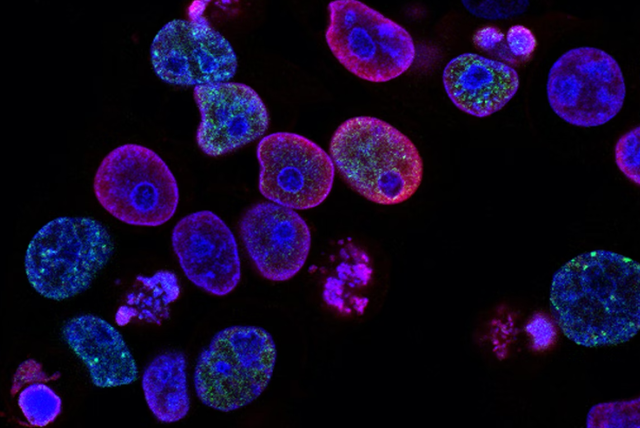


Through food, water and even through the air we breathe, we consume an average of five grams of plastic per week. That roughly equals one credit card of microplastics per week. A large portion of that is consumed through drinking water, including both tap and bottled water.
Research about the effects of nanoplastics on human health is still in its infancy. The majority of scientists seem to agree that microplastics and nanoplastics are cause for concern. Researchers in 2022 found tiny synthetic polymers deep inside humans’ lungs as well as in the blood of anonymous donors. In 2021, scientists even found traces of microplastics in human placentas.
A 2021 study came to the conclusion that microplastics tend to attach to and thus stretch the lipid membranes of human cells. That way, they destabilize the last protective barrier between our cells and the environment. The effects of this could potentially lead to serious dysfunctions in how our cells work and might even promote cell death.
Since nanoplastics are even smaller than microplastics, they can technically even pass through cell membranes as long as they fit the surfaces’ pores. That means they can penetrate the cell membrane and be transferred within the whole body.
These effects only take into account the actual plastic portion that nanoplastics carry into our bodies and neglect the toxic residues attached to them. Let’s remember that plastics often contain additives, such as dyes, pigments, stabilizers, flame-retardants and other toxic substances that may be harmful to our health in ways largely unknown or dependent on the residues themselves.
Reducing Nanoplastic Pollution
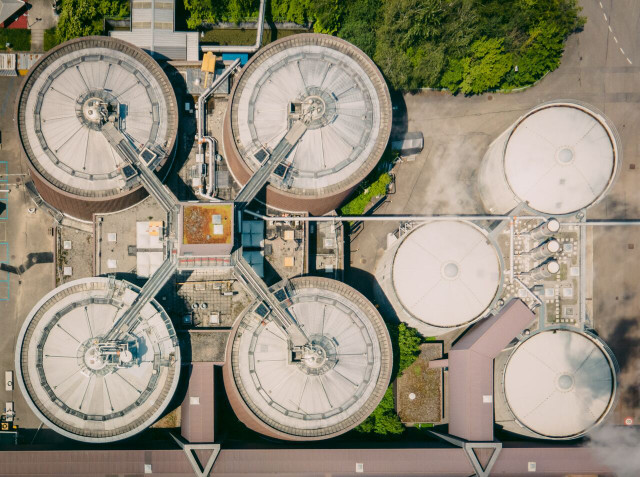


In an effort to not solely shift the blame on consumers, it’s crucial that we hold the industry and governments accountable for mitigating nanoplastic pollution. In a recent WWF study, the organization calls on governments to:
- Support further research
- Agree to legally binding accords on combatting plastic pollution
- Establish national targets for plastic reduction and recycling
- Collaborate between governments, organizations and industries
- Install effective extended producer responsibility
- Implement sufficient monitoring and compliance measures
While nanoplastics are hard to detect, there are some approaches to address nanoplastics pollution, one of them being thermochemical upcycling. Other research has shown that it could be viable to develop non-toxic, specially coated iron oxide nanoparticles that adhere to nanoplastics and pulls them out of the water like magnets.
Wastewater treatment plants usually filter out the majority of microplastics: on average, 72 percent of microplastics can be filtered from wastewater during the primary treatment and 94 percent after the third treatment.
Individual Actions to Reduce Nanoplastic Pollution
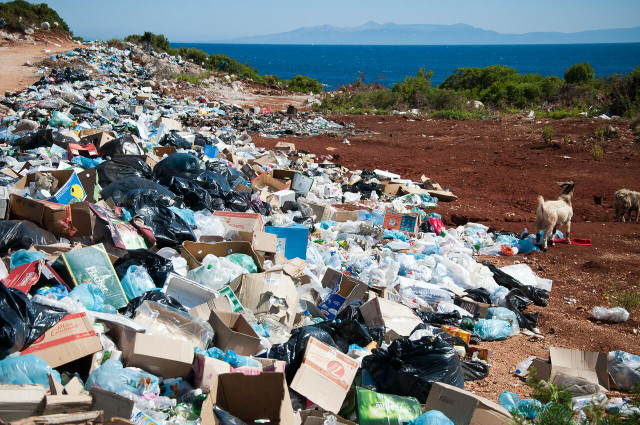


While a life without plastic may be challenging now, minimizing single-use plastics and choosing reusable options as much as possible will already impact the environment significantly.
Here are another couple of options you could engage in to further mitigate plastic pollution:
- Take part in local activities like beach clean-ups at your local river, lake or sea.
- Clean up after you leave any beach.
- Recycle your plastics, and don’t throw them in the regular trash.
- Educate your peers and engage in local education programs or local protests.
- Use laundry filters for synthetic clothing and wash your synthetic clothes with a full washing machine and at low temperatures. That way, there is less friction, so fewer microplastic particles will shed during a wash cycle.
- Advocate for policy changes and hold companies accountable by writing emails, signing petitions and encouraging reusable plastic options and recycling programs.
If you want to explore more ways to reduce plastic, you could read Go Plastic-Free: How to Use Less in 7 Easy Steps or 10 Solutions to Water Pollution in Our Daily Lives: Taking Action for a Cleaner Future.
Read more:
- What Is Polyester Made of and Is It Ever Sustainable?
- The Top 5 Human Activities That Contribute to Air Pollution
- What Are Wetlands? Exploring the Hidden Gems of Nature
Do you like this post?






